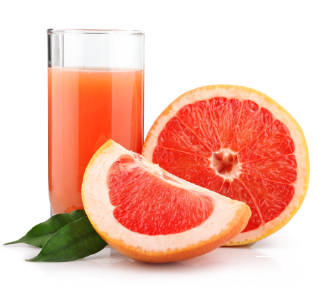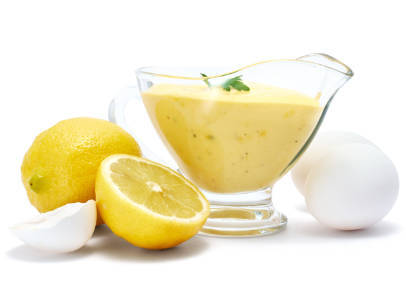Flavorings Category

Includes sweeteners, herbs, spices, chocolate, and extracts.
ginger root
With its sweet yet pungent flavor, ginger has become a mainstay of many of the world's cuisines. European cooks like to use dried, ground ginger to flavor gingerbread and other baked goods. Asian and Indian cooks prefer their ginger fresh, and they use it in spicy sauces and stir-fries. Ginger not only tastes good, it's also believed to have medicinal properties, and people sometimes use it to soothe their upset stomachs and boost their energy. Ground ginger isn't a good substitute for fresh, but dried whole ginger will work in a pinch, as will the minced or puréed ginger that's sold in jars.
Learn moregochujang
Gochujang is a spicy Korean fermented chili condiment. It is made by with chili powder, glutinous rice and soybeans. It is traditionally fermented in clay pots. Gochujang is often added to the Korean dish bibimbap.
Learn moregolden syrup
This amber-colored liquid sweetener is popular among British, Caribbean, and Creole cooks. It's made by evaporating sugar cane juice until it's thick and syrupy. Lyle's Golden Syrup and Steen's Pure Cane Syrup are popular brands.
Learn moregranulated garlic
Like garlic powder, granulated garlic provides the flavor, but not the texture, of fresh garlic. It disperses well in liquids.
Learn moregrape juice
This category includes red grape juice, white grape juice, and sparkling grape juice.
Learn moregrappa
This potent and somewhat harsh drink is made from the grape residue, called pomace, that's left over from making brandy. It's traditionally been thought of as a second-rate eau de vie, but some producers have developed premium grappas that are quite smooth and very pricey. Grappa is the Italian version, marc the French, aguardiente the Spanish, testerbranntwein the German, and bagaceira the Portuguese.
Learn moregreen ginger
These pink-tipped, shiny pieces of young ginger are mild and usually don't need to be peeled. They're easy to find in Asian markets.
Learn moregrenadine
This is a bright red, sweet syrup that's used in several mixed drinks. Most, but not all, grenadines are non-alcoholic. To make your own: See the Grenadine recipe on RecipeSource.com
Learn moreguacamole
Guacamole is an avocado based spread. It is commonly used as a dip or a spread on sandwiches and hamburgers. Spices are often added.
Learn moreguajes
These green or purple flat pods contain seeds that impart an unusual, garlicky flavor to Mexican dishes. The seeds are terrific with scrambled eggs or beans, but they have a reputation for causing flatulence.
Learn morehalvah
This is a Turkish candy made with ground sesame seeds and honey, often with fruit and nuts added. Look for it in the deli section of large supermarkets, or in Middle Eastern or Jewish markets.
Learn morehard cider
This is low-alcohol wine that's made from apples. It's fairly sweet, and especially popular in Normandy.
Learn morehardneck garlic
Hardneck garlic retains the stalk in the center of the bulb. They tend to have stronger flavors and do not store as long as softneck garlic. Hardneck garlics include purple stripe, rocambole, porcelain, and others.
Learn moreharissa
This is a hot North African paste that's used as a meat rub or (mixed with water or oil) as a condiment.
Learn moreHawaiian salt
This unrefined sea salt gets its pinkish-brown color from Hawaiian clay, called 'alaea, which is rich in iron oxide. The clay also imparts a subtle flavor to the salt. The salt is expensive, and hard to find on the mainland.
Learn morehawaij
This is a spice mixture used for stews, soups and meat rubs. A version is also used in coffee.
Learn morehazelnut paste
This is used as a filling in candies and baked goods. Look for it in specialty shops or Middle Eastern markets.
Learn morehemp seed
Hemp seeds are a terrific source of protein and other nutrients. Hemp devotees claim that the seeds are as versatile as soybeans, and that they can be made into oil, milk, tofu, and many other goods. Look for the seeds (shelled of their hard green husks) in health foods stores.
Learn moreherb vinegar
Herb vinegars are a convenient way to preserve fresh herbs and to incorporate their flavor into salad dressings, marinades, and sauces. They're easy to make at home. Just put one or two sprigs of clean, fresh herbs in a bottle of warm vinegar, tightly seal the bottle, and let it stand for at least a few days. The sprigs will eventually become bitter, so remove or replace them after a few weeks. Make sure that the vinegar you use has an acidity level of at least 5% (this information is given on the label). Wine, rice, or cider vinegars are good bases for most herb vinegars. Don't add too many herbs to the bottle, or you may reduce the acidity of the vinegar so much that it loses its ability to preserve.
Learn morehoisin sauce
This is a sweet and garlicky bean sauce that's often used as a dipping sauce. Available in Asian markets and in many large supermarkets.
Learn morehoja santa leaves
These heart-shaped leaves impart a root beer flavor to dishes, and they're great for wrapping tamales and other foods. They're hard to find; your best bet is a Hispanic market.
Learn moreHollandaise Sauce
You can cheat and buy this in cans, but the tinny flavor will rat you out. To make your own: See the recipes for Hollandaise Sauce, Hollandaise Sauce--Microwave or Quickie Hollandaise Sauce posted on RecipeSource.com.
Learn morehoney
This is a thick liquid sweetener that's produced by bees from the nectar of flowers. There are over 300 kinds of honey, most of them named after the principal nectar source (e.g., clover honey, eucalyptus honey). These varieties range in color from almost white to amber to dark brown. As a rule of thumb, the lighter the color of the honey, the milder the flavor. You shouldn't feed honey to babies younger than one year--it could cause infant botulism. Store honey in a cool, dark place, where it will keep almost indefinitely. If the honey crystallizes, heat it briefly in a pan of hot water or in the microwave. Because the production of honey exploits bees, many vegetarians and vegans refuse to eat it. Popular varieties: Alfalfa honey is a very popular light and mild honey, great for baking or table use. Basswood honey is light in color, but it has a fairly strong flavor. Buckwheat honey is very dark and bold-flavored, so it's not well suited to baking. Clover honey is America's most popular honey, very mild and fine-flavored. Eucalyptus honey, popular in Australia, has a somewhat bold and slightly medicinal flavor. Orange blossom honey is an excellent, mild honey with a delicate flowery flavor. Sage honey is almost white in color, with a mild flavor. Tulip poplar honey is dark, yet mild-tasting. Tupelo honey is highly prized for its distinctive mild flavor; it's also relatively expensive. Wildflower honey has a fairly strong flavor.
Learn morehorseradish (prepared)
This pungent condiment goes well with meats and fish, and it’s a key ingredient in cocktail sauce. It’s best to buy horseradish in small amounts and store it in the refrigerator—it turns dark and loses much of its bite after a few months. Look for it in the deli case. Varieties: The most common is white horseradish, which is made with vinegar. Creamed horseradish = cream-style horseradish has a little mayonnaise and/or sour cream added; horseradish sauce has a lot. Red horseradish = beet horseradish is made with beet juice.
Learn morehot cocoa mix
You need only add boiling water to this powdered mix and stir to make hot chocolate.
Learn morehot pepper sauce
Three well-known brands are Tabasco sauce, Louisiana hot sauce, and the thicker Pickapeppa sauce.
Learn morehuauzontle
This Mexican vegetable looks like a long, skinny broccoli stick. Mexican cooks dip them in batter and deep-fat fry them.
Learn morehuli-huli sauce
This Hawaiian condiment is made with soy sauce, brown sugar, ginger juice, and other ingredients. It's used to flavor meats.
Learn morehummus
Hummus is a creamy butter made from chickpeas, tahini, lemon juice and other spices. It is good as a spread on bread or crackers.
Learn more






































































































































































































































































































































































